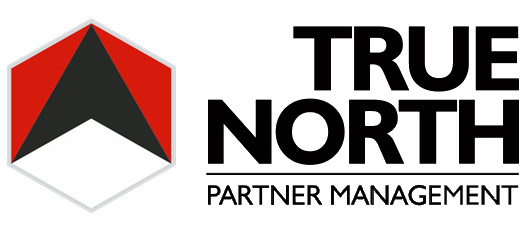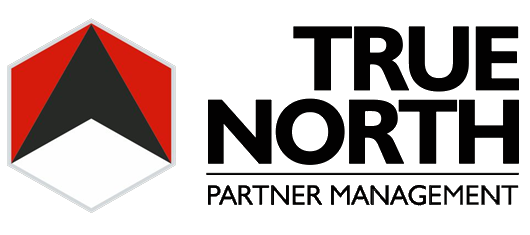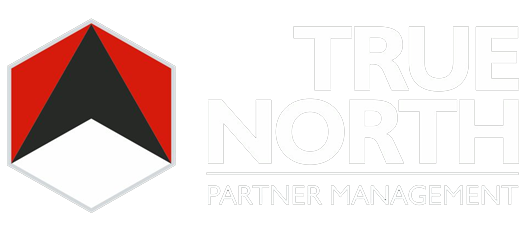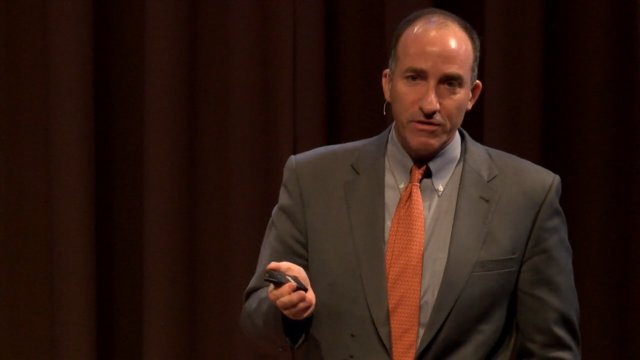The following post originally appeared on Forbes | Apr 21, 2014
Do you remember traveling when you were a kid? Were you the one in the back seat with a map—or several—helping your parents navigate and guess where the next Arby’s or Denny’s was? Though the map your father picked up might have gotten you from point A to point B, it did little else. Where was the next gas station? How to actually navigate to Aunt Sally’s? What if you were hungry? Where was the next restaurant? Shoot, what if you needed coffee, or a bathroom, or a hospital? How were you to know where to go?
With Google Maps and car-based navigation systems, not only has the position of backseat navigator gone the way of the dodo, so has most guess work in travel. No more watching the odometer to measure the distance to the next turn; no more driving down eerily dark, abandoned roads trying to find your way back to the highway; no more stopping at some ruffian truck stop because you don’t know when the next stop will come. With Google Maps, the way we now travel has been dramatically and forever changed.
With this revolutionary shift in mind, what if we had a Google Maps for law? Or at least for Forbes Global 2000 companies who spend hundreds of billions of dollars on legal services? Navigating the intricacies of a major legal undertaking—regulatory compliance or merger or financing, for example—is terribly complex. And though traditional legal project management methodologies offer some guidance, the “map” they provide is quite analogous to the old Rand McNallys: flat, broad, basic, and though helpful, only so in a rudimentary way.
If there were a Google Maps for the legal market, it would look like Legal OnRamp (OnRamp), a Silicon Valley company that’s partnered with Cisco Systems and different law firms to help legal departments “map” their work product—contracts, for instance—through large-scale online collaboration. OnRamp, created in 2008 and enjoying support from the likes of Mark Chandler, General Counsel (GC) of Cisco Systems, traditional law firms such as Orrick and the Magic Circle’s Allen & Overy, and other legal institutions such as the General Counsel Roundtable and Riverview Law, heard the market’s cry to make law easier to navigate, and is doing just that.
In seeking perspective on today’s legal market, I am reminded of the proverb: If you want to know about water, don’t ask a fish. So for today’s piece, we’re leaving the pond to gain a meta-perspective from OnRamp CEO, Paul Lippe, who is not only a former Silicon Valley GC, but is also an ABA Journal columnist, the former CEO of Stanford SKOLAR, and popularized the term “new normal,” as it pertains to the current legal market. See our conversation below:
David: Which companies do you think have the most effective in-house departments?
Paul: Legal departments are generally more effective than law firms, providing better bang-for-the-buck. That’s why legal departments have been growing much faster than private practice.
The legal departments that I would say are the champs are FMC Technologies, Cisco, Mass Mutual Insurance, and several of the big banks, who, I’ve found, don’t usually like to be named. I especially like the mantra of Jeff Carr, the GC of FMC Technologies: “We are not lawyers. We are business people with legal training forged into a cohesive legal team committed to the success of FMC.” And he goes on to talk of their focused effectiveness, efficiency, constant improvement, creative disruption, and integrity… Jeff is very well-respected among GCs who see the benefit of focusing on people, process, and technology.
David: FMC, Cisco, Mass Mutual, and some of the big banks…that seems like an eclectic list? What do they have in common?
Paul: For most of the last 20 plus years, you could say the legal department world has been divided between the “Silicon Valley” and “Wall Street” models. In the Silicon Valley model, GCs saw that by focusing on people, process, and technology, they reduced costs and improved quality – they needed that approach to get big fast. In the Wall Street model, the assumption had been that cost was quality. Look at the recent headline in the Financial Times about the big banks paying $100B in fines and settlements (Ref. Sub. Req.); it’s obvious that something isn’t working.
At the same time, the big financial players are coming to grips with lower margins, regulatory complexity, and the need to better manage risk at scale. So the banks are finding a lot to like in the Silicon Valley model, especially as they cope with the “too big to fail” regulatory challenge. You’re starting to see a huge gulf in results and costs between those banks that have started to implement the Silicon Valley model and those that are still in the old model. Mark Roellig [the GC of Mass Mutual] might be the perfect embodiment of that evolution—he used to be the GC of several tech and telecom companies in the West, and now he’s bringing that approach to a more traditional regulated industry in Massachusetts.
David: What do you think is the most dangerous belief in today’s BigLaw culture?
Paul: I would say that the most dangerous belief is that law is primarily about the reasoning processes—the credentials and intentions of the lawyer—as opposed to the outcome for the client, the processes and systems to deliver that outcome, and the overall impact for society; lawyer-centric rather than purpose-centric.
Lawyers also [generally] believe that the complexity that matters is complexity of reasoning, rather than complexity of information and organization. We’re working on a project right now that maps thousands of contracts for a large bank that needs to create a “living will.” We’ve found, literally, 8 different ways that the same clause is expressed; 8 different ways to navigate the same road to Aunt Sally’s. Most lawyers imagine that “bespoke” drafting is a good thing; but for the bank as a whole, simplification and standardization are much better.
Unpacking the legacy work is a very useful and complex project; adding complexity in work going forward is actually negative value. Legal departments care more about the “law of corporation”—the work product they have created themselves—than they do about corporate law. So they need to use the same approaches as Google Maps to make that information available and linked, and then capture the meta-information—the information about the information—so as to make it super-usable.
David: What type of metrics do you think that law firms should be most cognizant of at this stage of BigLaw’s evolution?
Paul: Obviously law firms are way over-focused on near term profits, so the primary thing they measure is billings. So firms tend to under-invest in longer term projects and strategies, and as we’ve seen at Dewey and elsewhere, there’s a great danger of financial engineering leading to bad surprises. [Measuring] billings is a short-term measure, but doesn’t provide much useful information about the future.
The key metric I’ve seen many organizations use is Net Promoter Score (NPS), which describes how likely your customers or clients are to recommend you to a trusted peer. NPS gives trend information and information relative to other like-organizations. For sure, law firms should ask their clients how they’re doing and how they could do better. But, again, the prevailing culture of the legal profession resists external feedback and codification of metrics. NPS is a way to boil it all down to something useful and more or less indisputable.
David: How do you see the AmLaw 200 evolving over the next 10 years?
Paul: I get asked a similar question about law schools and my answer is more or less the same. Large firms are entering a Bermuda Triangle of management challenges: slower growth, greater pressure for change, and a governance model designed to be anti-nimble. The problem for firms is that they are designed to not be especially good at change, so it’s crazy to imagine that they will able to transcend that architecture. Some firms will do fine, some will struggle. For some, the smart strategy may not be so much to emphasize change, but to emphasize opportunism—what to do when other firms go out of business.
David: How do you think law schools should evolve over the same period?
Paul: Law school [in the US] is largely “appellate clerk school;” that’s what they train folks to do. There is relatively little engagement with what lawyers actually do, and very little true empathy with legal clients, so there is little ability to see how to improve. When they join big firms, newly-minted lawyers largely do data processing work in a pretty poorly structured way, so there’s a pretty gross mismatch between what law school prepares people for and what they find themselves doing.
It’s unfortunate that law schools haven’t, until recently, done much to prepare the young lawyers to lead from their strength [which is] to manage complexity in information using the kind of online skills they have grown up with. So law schools must look for ways to connect to clients to better prepare 21st century Lawyers.
David: How do you see the emergence of large and well capitalized ABS’s affecting US firms?
Paul: In any field, greenfield startups have certain advantages, since they can be designed for current market needs, avoid legacy encumbrances, and tend to have more engaged employees. So Virgin America is a better airline than United, Google is better, or at least more profitable, at aggregating information than The New York Times. Under the new UK rules, Alternative Business Structure (ABS) firms like Riverview Law can build greenfield legal delivery systems that inherently have Virgin America-style advantages; couple that with the fact that most of the growth in law will be information-oriented work rather than reasoning-oriented work, and that most of the growth will be outside the US. So the current regulatory structure puts US firms at a significant disadvantage to UK firms.
David: Do you think that the US will liberalize in the near future? When? Why?
Paul: It’s hard to say. The US market is at least two different markets: firms that service the global economy, and firms that service a state or local economy. The global economy firms will quickly recognize that they are at a disadvantage relative to the UK firms and favor at least partial liberalization. The local economy firms will get squeezed by the LegalZooms and Axioms, and will try to block liberalization. The key will be the law schools, which will continue to play a powerful role at the state level. Will law schools advocate for liberalization to open up markets for students and access for underserved clients? Or will they stay with the status quo interests of their mainstream alumni? Who knows?
David: If you could be in charge of any law firm for a year, what would it be, and what would be your primary initiative?
Paul: Let’s step back and look at what’s been driving growth in the legal market throughout our lifetimes, namely the complexity of law and the complexity of information. Until recently, law firms pulled off a remarkable feat: they convinced their clients to pay law firm rates for information management work—they charged $450/hr for young lawyers sitting in the back seat reading maps. So now the clients have caught up, forcing firms to reduce the price of information work. We call this unbundling, and like you, we have been talking about it for a while.
I’ve found that many law firms express astonishment at unbundling, but really the astonishing thing is that they’ve been able to charge so much for this work for so long. So the smart firms will embrace and extend—[that is] partner with people who can handle the information better, while raising rates for more senior lawyers.
Within the law firm universe, I’d say the best positioned firms are Allen & Overy and Linklaters in the UK and Skadden in the US. They seem to have the right combination of quality lawyers, management, global footprints, competitive home markets and brands, and innovative cultures.
David: If you could be in charge of any legal department, what would be your primary initiative?
Paul: Every legal department will seek to “Cisco-ify” themselves, and use the focus of people, process, and technology to operate with higher quality and lower costs. The mistake is to imagine that you can just drop technology into the equation and transform the department. Maybe you’ve heard Steve Harmon from Cisco [when he said], “I Can buy Tiger Woods’ golf clubs but it won’t give me Tiger’s game”?
The smart move is to use massive ingestions of people, process, and technology to tackle mega-projects—like M&A integration or regulatory compliance—and transform the legacy information that the department already has in a way that will enable much more efficient work going forward. That’s how sophisticated organizations think about change management—solve a hard problem now in a way that makes it easier to solve other problems, rather than sit around chatting about what you might do next year when you have a jetpack.
David: What technology is the biggest immediate threat to the current leverage pyramid?
Paul: Cloud-based document collaboration is the most important technology, although not necessarily a threat. Lawyers imagine that technology will displace reasoning. I think we’re a very long way from that. But the technologies of information handling in law need to catch up to other fields, and to do that we have to unpack all the information that’s in documents, connect it to people, and [as a result] stop reinventing the wheel and start improving quality.



